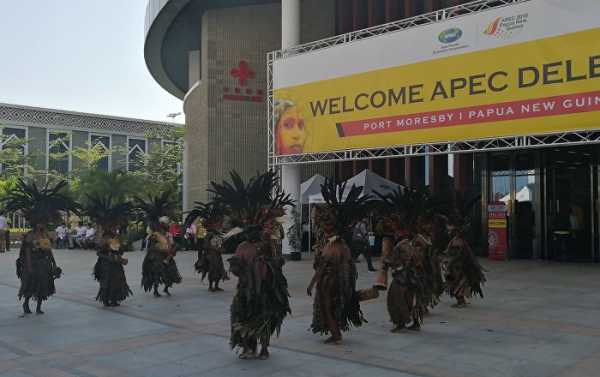
The US and its key Pacific allies signed a joint agreement to boost investment in the infrastructure of Papua New Guinea, suggesting the effort could counterbalance the onset of China’s “yuan diplomacy” in the southern Pacific.
Kristian Rouz — Several member-states of the Asia-Pacific Economic Cooperation (APEC) are touting massive infrastructure investment into Papua New Guinea in wake of the organisation’s summit in that country. The effort is spearheaded by the US and its allies — mainly, Australia — as they seek to counterbalance the rising influence of Mainland China in the Asia-Pacific.
In an announcement on Sunday, the US, Japan, New Zealand, and Australia said they would invest $1.7 bln in the Papuan economy to help the country develop a modern electric power grid. The so-called Pacific infrastructure plan is seen as seeking to offset China’s “yuan diplomacy” — amid Beijing’s effort to advance its loans into regional economies to bolster its geostrategic outreach.
US Vice President Mike Pence, along with top Australian, New Zealander, and Japanese officials signed the accord on the sidelines of the APEC forum in Port Moresby. The plan will connect roughly 70 per cent of the Papuan population to electricity by the year 2030.
Currently, only 13 per cent of Papuans have access to the electric grid.
“This initiative will also be open to other partners that support principles and values which help maintain and promote a free, open, prosperous and rules-based region,” the Trump administration said in a statement.
The joint statement didn’t provide details as to what type of power generation would be used, as, aside of the actual power grid, Papua New Guinea is also lacking power plants. The Australian government said separately that Canberra would allocate at least $18.3 mln for the plan in its first year.
For his part, Pence reiterated his criticism of China’s Belt and Road initiative — after blasting it during Saturday’s meetings as driving emerging markets deeper into debt. Pence said that the plan for Papua New Guinea provides a viable alternative to Chinese investment without weighing on the country’s GDP growth projections.
“America and our businesses are investing in this region as never before,” Pence said. “The United States is going to continue to work in ways for a brighter future” in the region, he added.
However, the US-led plan for Papua New Guinea appears to still be insufficient to counter China’s massive lending activity across the region.
While the US and its allies are investing billions, The Belt and Road initiative is expected to expand to a whopping $1.3 trln in Chinese loans to foreign countries by the year 2027. However, China has only invested a total of $1.8 bln in the economies of the Pacific islands, out of which only $632 mln was invested in Papua New Guinea.
In this light, the US-led $1.7-billion initiative is deemed quite comparable in scale.
The plan comes after Australia pledged a separate $1.5 bln for infrastructure development across the southern Pacific earlier this month.
“It’s time to power up Papua New Guinea, right across the country,” Australian Prime Minister Scott Morrison said. “We will always be here to support the people of PNG and support their economic development.”
Pence also suggested the US-led plan is a “better option” for regional economies than the development projects China has to offer. Pence warned emerging market countries against accepting China’s loans, which often have unclear conditions.
The US “doesn’t drown our partners in a sea of debt” nor does it offer “a constricting belt or a one-way road,” Pence stressed during his meetings with APEC CEOs Saturday — ahead of the infrastructure announcement.
Meanwhile, Australia has until recently been the main donor for regional investment, when China started advancing its low-interest loans into the region’s shattered economies. Australian officials have suggested its private businesses have struggled to compete against China’s government-backed bilateral investment programs.
But now that the US is leading a new investment incentive, things might change.
The infrastructure plan for Papua New Guinea is a “principles-based, sustainable infrastructure development that is transparent, non-discriminatory, environmentally responsible, promotes fair and open competition, upholds robust standards, meets the genuine needs of the people of Papua New Guinea and avoids unsustainable debt burdens,” according to a joint statement from the US and its allies.
For his part, Papuan Prime Minister Peter O’Neill welcomed the agreement, saying the electric grip will also include high-speed internet cables. O’Neill also stressed that the plan will improve his country’s participation in the global economy.
Sourse: sputniknews.com






